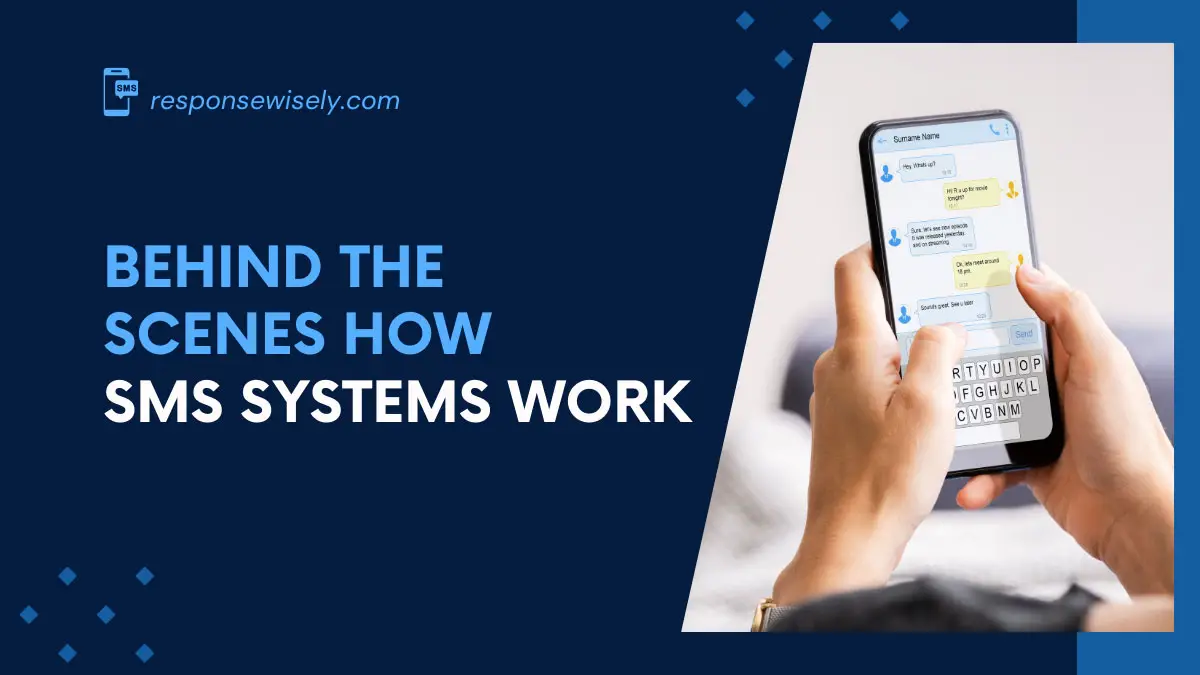Ever wondered how your text messages magically reach their destination in seconds? In this text, I’ll take you behind the scenes of SMS systems to unravel the fascinating technology that powers our everyday communication. From the moment you hit send to the swift delivery on the recipient’s screen, there’s a complex web of processes at play.
As I investigate into the inner workings of SMS systems, you’ll discover the intricate dance between mobile devices, cell towers, and network protocols that ensure your messages traverse the digital area seamlessly. Understanding the backbone of SMS technology not only sheds light on its reliability but also highlights the remarkable efficiency that underpins our interconnected world. Get ready to uncover the secrets of SMS systems and gain a newfound appreciation for the invisible threads that keep us connected.
Basics of SMS Messaging
SMS Components
SMS messaging comprises three main components: the short message service center (SMSC), the mobile device, and the cellular network. When a text message is sent, it travels from the sender’s device to the SMSC, which then forwards the message to the recipient’s device through the cellular network.
SMS Protocols
SMS Protocols are the set of rules that govern how text messages are sent and received. The most common protocols used in SMS technology are SMPP (Short Message Peer-to-Peer) and HTTP (Hypertext Transfer Protocol). These protocols ensure the smooth and secure transmission of messages between devices.
SMS Routing
SMS Routing is the process of determining the most efficient path for a text message to reach its destination. When a message is sent, the network determines the best route based on factors like network availability, recipient location, and message priority. This ensures that messages are delivered quickly and reliably to the intended recipient.
Understanding SMS Delivery
SMS Gateways
When a user sends an SMS, it is routed through an SMS Gateway. This intermediary server is responsible for the transmission of messages between mobile devices and the SMSC. It ensures that messages are delivered accurately and efficiently.
SMS Aggregators
SMS Aggregators are companies that act as middlemen between businesses and mobile network operators. They provide a unified platform for businesses to send large volumes of SMS messages. By working with multiple carriers, SMS aggregators enable global reach and reliable delivery of messages.
The Role of Mobile Network Operators
SMS Interconnection
Mobile network operators play a crucial role in the seamless flow of SMS messages between different networks. Through SMS Interconnection, these operators establish connections to exchange messages, ensuring that texts can reach recipients regardless of their network provider. This interconnection enables global communication and enhances the reach of SMS services.
SMS Billing
Another essential function of mobile network operators is SMS Billing. They handle the billing process for SMS services, charging customers for messages sent and received. This ensures that users are correctly billed for their SMS usage and that service providers receive compensation for the messages transmitted through the network.
| Facts |
|---|
| Over 5 billion people worldwide can send and receive SMS messages. |
| Mobile network operators help SMS interconnection to enable worldwide communication. |
| SMS billing by operators ensures accurate charges for SMS services. |
Security in SMS Systems
SMS Encryption
When it comes to SMS Encryption, it’s crucial to ensure that messages are secure and protected from unauthorized access. Encryption algorithms are used to encode the content of SMS messages, making it challenging for hackers to decipher the information.
SMS Authentication
SMS Authentication plays a key role in verifying the identity of users. By sending a one-time code via SMS, users can prove that they are who they claim to be when accessing online accounts or making transactions. This extra layer of security helps prevent unauthorized access and protects sensitive information.
Key Takeaways
- SMS systems comprise components like SMSC, mobile devices, and cellular networks.
- SMS protocols like SMPP and HTTP govern the secure transmission of messages.
- SMS routing finds the most efficient path for message delivery based on various factors.
- SMS gateways and aggregators ensure accurate and efficient message transmission.
- Mobile network operators facilitate SMS interconnection globally and handle SMS billing.
- Security in SMS systems involves encryption to protect messages and authentication for user verification.
Conclusion
Understanding the inner workings of SMS systems is crucial in today’s digital world. SMS Encryption and SMS Authentication are key components that ensure the security and integrity of messages sent over SMS platforms. By implementing encryption algorithms and robust authentication methods, users can communicate securely and confidently, knowing that their data is protected from unauthorized access. As technology continues to evolve, staying informed about the mechanisms behind SMS systems is essential for maintaining a secure online environment.
Frequently Asked Questions
What is SMS Encryption?
SMS Encryption involves using encryption algorithms to secure messages from unauthorized access, enhancing privacy and data protection.
Why is SMS Encryption important?
SMS Encryption is important as it ensures that messages are secure and protected from being read by unauthorized parties, thus enhancing privacy and safeguarding sensitive information.
What is SMS Authentication?
SMS Authentication involves verifying user identities by sending one-time codes via SMS, adding an extra layer of security to prevent unauthorized access.
How does SMS Authentication enhance security?
SMS Authentication enhances security by requiring users to verify their identity with a unique code sent to their mobile device, reducing the risk of unauthorized access.

